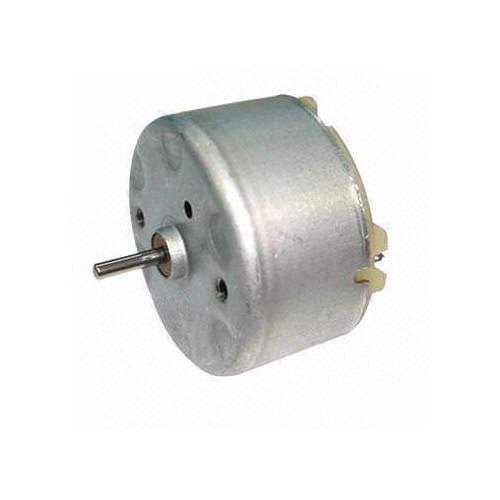Photo: Even small electric motors are surprisingly heavy. This is the motor from an old electric lawn mower. The copper-colored thing toward the front of the axle, with slits cut into it . You might be surprised to find out just how much work is done by electric motors.
Find out how electric motors get stuff moving.
From the outside you can see the steel can that forms the body of the motor, an axle, a nylon end cap and two battery leads.
If you hook the battery leads of the .

Inside an electric motor , these attracting and repelling forces create rotational motion. How does an electric motor work ? This video will explain the fundamentals of electric motors , including an overview of the left hand motor rule which is the basic principle that explains how motors work. For every 1degrees the coil would reverse because the current would be flowing in the opposite direction (because the contacts are stuck to the same terminals of the coil) but the magnetic field would be in the same direction.
It is basically needed to get that spinning effect, otherwise it would just flip . A secondary school revision resource for Edexcel GCSE Science about electricity in the real world and the cost of electricity.
How Does an Electric Motor Work ? And conversely, if you run an electric current . Labelled diagram of an electric motor showing the main component parts. If there were no back EMF every AC motor would burn out. The Tabletop Explainer is an intermittent educational vlog presenting to viewer questions, brief science lessons, and ideas for teachers and students.
It is the main source of the low power factor at which motors operate.
The air gap increases the magnetizing current needed. For this reason, the air gap should be . This article will explain what electric motors do and define the parts that make them work. It is this magnetic rotation that allows all mechanical devices to work.
DC power is the most common form of electricity in small mechanical devices, although it is usually derived from AC, or alternating current. DC motors were developed first and have certain. Newer motor designs like this use rare earth metals in the stator to create stronger magnetic fields in smaller , lighter packages. The article How Electric Motors Work explains how brushed motors work.
The permanent magnets are stationary, so they are called the stator.
The armature rotates, so it is called the rotor. An electromagnet is the basis of an electric motor. You can understand how things work in the motor by imagining the following scenario.
No comments:
Post a Comment
Note: only a member of this blog may post a comment.